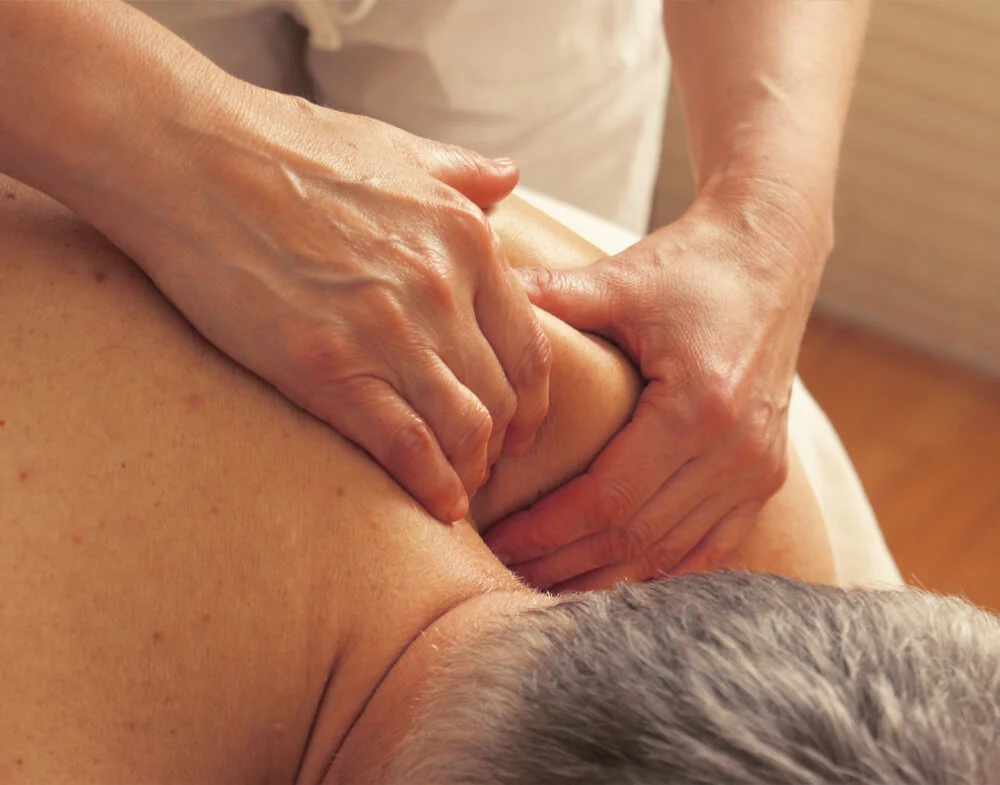THE BETTER HEALTH CLINIC SERVICES
Discover our Osteopathic + Integrative Medicine services
Pro-active management for acute and chronic musculoskeletal pain and injury
What is Osteopathy?
Osteopathy is grounded on a ‘whole body’ philosophy of diagnosis and neuro-musculoskeletal treatment. Osteopaths view the entire body as an integrative system, rather than focusing solely on the area of complaint, allowing them to correct the source of the problem as well as optimise physical function and well-being.
Osteopathy uses multiple forms of musculoskeletal and movement therapy, therapeutic needling techniques and ongoing support and educational advice about factors that may have an influence on pain, injury and movement.
In Australia, osteopaths are 5 year university-qualified and government-registered allied health practitioners who take your individual medical history and environmental factors into account to understand the source of pain and develop tailored personal treatment plans to manage musculoskeletal pain and issues with movement.
Discover the range of services we offer…
DO NOT DELETE
Osteopathy
…is often referred to as Manual Medicine. Osteopaths use manual therapy, our hands, to create physiological change in the human body. There are multiple techniques used for this..Myofascial release, Strain-Counter strain, Functional Technique, Balanced Ligamentous Tension, Muscle Energy Technique, Cranial Therapy, Joint articulation, and High Velocity Technique- often referred to as a ‘crack’. Any or all of these techniques are used in every session, mostly without the patient being aware they are being employed by their skilled Osteopath.
Massage
We offer a combination of deep tissue, stretch therapy, joint mobilisation, myofascial release, and lymphatic techniques to achieve the best outcome on its own, or in combination with your Osteopathic treatment.
Functional Nutrition
We offer nutritional services for:
- optimising injury recovery
- sustainable weight loss
- improved digestive health
- reduced inflammation
- perimenopause/menopause nutrition and optimising metabolism
Dry Needling
Dry Needling is one of many modern approaches to needling that come under the legal and conceptual framework of Therapeutic Needling in Australia and many Western countries. This is defined as the use of acupuncture needles in the human body according to western medical science, history and tradition to create a therapeutic effect. There are multiple approaches in existence, all of which Dr Sam uses. Radicular needling, dermatomal needling, sports needling, trigger point needling, homeostatic needling, biomedical needling, neuro-fascial needling and what is commonly known as Dry Needling.
Myofascial Release
Myofascial Release originates from the early Osteopaths pre-1900, but was expanded by Ida Rolf in the 1960s, when she developed the approach known as Rolfing after working with an Osteopath in the American Midwest, and becoming fascinated with Fascia and its cellular properties. It uses what is known as an Indirect and Direct approach. Indirect myo-fascial release is where the practitioner takes the body into a position of ease, and allows the tissue to soften, release, unwind or melt. Direct technique is where your Osteopath engages the tissue barrier and using mostly a shearing or oblique force to open the tissue. This was mostly used by Ida Rolf. The goal of fascial release is to expand the collagen fibres, release hyaluronic acid and rehydrate the tissues. This allows a greater ease of movement within the body, and a healthier tissue state.
DO NOT DELETE
Cranial Therapy
Cranial Therapy, or Osteopathy in the Cranial Field, is one of the original Osteopathic techniques and approaches to effecting change in the human body. It dates back to the 1880’s in written texts, by AT Still the founder of Osteopathy and William Sutherland his prominent early student, and has experienced a huge expansion in popularity among manual therapists and bodyworkers since the late 1980’s. Put simply the Osteopath uses very gentle touch to effect change in tissues of the patient, especially the fascia, lymphatic system and neural system. There are multiple approaches used but the goal is always the same to find restrictions in the tissues of the body and release them.
Scar Tissue Release
Scar Tissue Release, is where your Osteopath releases adhesions in and around scars in the human body. All scars can usually be assisted to re-integrate back into the surrounding tissue, rather than being stiff or adhered onto tissues and/ or attachment points. Human soft tissue fibres should slide and glide over themselves, and be supple and well hydrated. So when there is an adhesion this movement is altered or stopped, effecting lymphatic and interstitial microcirculation, tissue integrity, strength and function. Common scars treated daily include post surgery, appendectomy, caesarean, and tendon and ligament ruptures.
Acupuncture
Acupuncture is defined in Australia as the insertion of Acupuncture needles into the human body according to Chinese medicine, history, theory and practice. However the use of acupuncture needles across Asia, and especially Japan where your Osteopath Dr Sam studied and lived for many years, has multiple approaches and techniques just like therapeutic needling. The goal is always the same; to improve the health of the patient by using acupuncture needles to stimulate a therapeutic and healing response in their body, but with a different intellectual framework.
Shockwave Therapy
Shockwave therapy uses compressed air sent to a handpiece that accelerates a projectile, which strikes a fixed applicator at high speed (up to 90 km/h). The kinetic energy resulting from this movement is converted into a shock wave transmitted in a radial manner to the targeted tissues. The applicator is held against the skin to target tissue deeper in the body. This is believed to induce increased blood flow and metabolic activity around the site of pain accelerating the healing process. The following conditions are the most commonly treated:
- Tennis/golfers elbow
- Plantar fascitis
- Achilles tendinopathy
- Patellar tendinopathy
- Shin splints
- Bursitis
- ITB syndrome
- Rotator cuff tendonitis
- Hamstring tendonitis
- Chronic trigger points
High Power Laser
DolorClast® High Power laser’s 905nm wavelength triggers two main types of effects in the targeted area:
- Analgesic effect: Kicking in 5min after the end of laser treatment and lasting up to 72h.
- Anti-inflammatory effect: Decreasing acute inflammation and leading to a quick absorption of the oedema and a faster healing process of the damaged tissue.
Wavelengths comprised between 650nm and 1350nm are known as the “therapeutic window”. Within this frame, wavelengths penetrate deep into the tissues of the body as they are not absorbed by water, blood and melanin and can therefore trigger biological mechanisms. Within the therapeutic window, the 905nm wavelength has been specifically chosen for the DolorClast® High Power Laser for its ability to be even less absorbed by water.
The 905 nm wavelength allows for a treatment of deep pathologies by a tissue penetration of up to 120mm without burning of the skin, and it further switches off nociceptors; the bodies pain receptors. The 905nm laser light has the property to switch off these nociceptors after only 3 minutes of irradiation. Thus the DolorClast® High Power Laser provides a quick and strong antalgic effect, without having to use any pain medication.
Diagnostic
An integrated osteopathic approach to health care begins with information about a patient’s complaint, including a comprehensive history of your current pain, medical history (any previous surgeries, illnesses), family history, medication and general lifestyle.
After the details of your complaint and medical history have been understood, osteopaths will do a careful and skilled physical examination by touch to determine how well your body moves actively and passively, as well as detect any areas of sensitivity, inflammation, joint restriction, muscular tightness, and other tissue changes. This allows for an assessment of the affected region in the context of the rest of your body.
Following examination, and a diagnosis being established, an osteopath will be able to discuss with you how best to treat the complaint and start osteopathic care to reduce your pain. Additional referrals for diagnostic images or a visit to another healthcare professional or GP may be recommended.
Proactive Healthcare
Osteopathic treatment emphasises health literacy, preventative medicine and wellness, allowing osteopaths to provide the best-practice care for a wide range of neuro-musculoskeletal conditions.
Osteopaths take a pro-active approach to treatment, focusing on education and preventative care to help patients become active participants in their own health and support them beyond illness recovery.
Osteopathic treatment aims to develop long-term solutions for pain management through the development of treatment plans as well as patient awareness of the causes of their pain and skills to manage it. This is achieved through:
- Identifying the causative factors, such as problems with overuse, deconditioning or workplace ergonomics.
- Teaching more efficient and less strenuous body usage in actions at home or at work.
- Providing individually tailored exercise programs both for rehabilitation and prevention.
- Teaching therapeutic movement exercises and relaxation techniques to reduce stress and pain.
- Working in conjunction with other practitioners where appropriate.
Nutritional Medicine in Focus
At The Better Health clinic we believe and know that “Food is Medicine”. A nutrient-dense and diverse diet provides fuel and essential building blocks for your body to function optimally.
Avoiding foods that cause inflammation and poor gut health and including more foods that ensure your body can heal and recover is an integral part of your long term health outcomes.
We offer nutritional services for:
- optimising injury recovery
- sustainable weight loss
- improved digestive health
- reduced inflammation
- perimenopause/menopause nutrition and optimising metabolism
Remedial Massage in Focus
A Remedial Massage therapist uses assessment and treatment of the muscles, tendons, ligaments and connective tissues (fascia) of the body, to assist in pain, injury and rehabilitation. A remedial therapist must know anatomy, physiology and pathophysiology to assess and treat the musculature and fascia.
There are many different techniques that Remedial Massage uses.
Here at The Better Health Clinic, we use a combination of deep tissue, stretch therapy, joint mobilisation, myofascial release, and lymphatic techniques to achieve the best outcome on its own, or in combination with your Osteopathic treatment.


